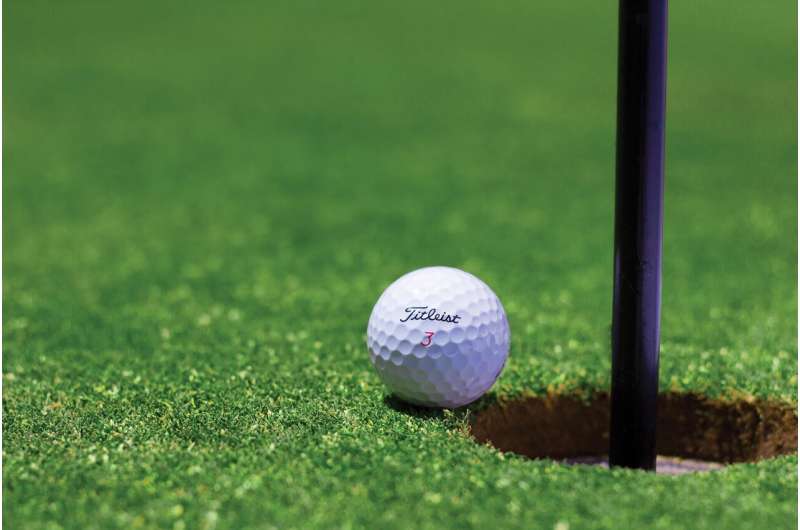A recent study by researchers at the University of Bristol has shed light on the frustrating phenomenon known as the “lip out” in golf. The study, published in Royal Society Open Science in March 2025, explores the mechanics behind why golf balls sometimes fail to drop into the hole after appearing to do so. This occurrence can affect players of all skill levels, from seasoned professionals to amateurs.
Emeritus Professor John Hogan from the School of Engineering Mathematics and Technology has dedicated his research to understanding this sporting quirk. He has referred to these errant golf balls as “the golf balls of death,” likening their behavior to motorcycle riders performing a circular stunt known as the “wall of death.”
Professor Hogan identified two distinct types of lip out: the rim lip out and the hole lip out. The rim lip out occurs when the center of mass of the golf ball does not drop below the level of the green. In contrast, the hole lip out happens when the ball falls into the hole but undergoes a pendulum-like motion, rolling around the inside wall of the hole before potentially bouncing back onto the green.
At the core of these lip outs is a concept known as “degenerate saddle equilibria.” This term describes the precarious balance point where a golf ball teeters on the edge of the hole. If disturbed by external factors—such as a grain of sand or a gust of wind—the ball may either fall into the hole or roll back out onto the green.
The mechanics of the hole lip out are particularly intriguing. Professor Hogan explained that when the ball falls into the hole, it can convert potential energy into spin. This unique motion can lead to the ball returning to the rim of the hole instead of settling in.
For golfers hoping to reduce the likelihood of encountering a lip out, Professor Hogan offers some practical advice. He suggests aiming as close to the center of the hole as possible while ensuring the ball approaches the rim with minimal speed. This strategy allows just enough momentum for the ball to tip into the hole without carrying it around the rim and back onto the green.
Professor Hogan’s research builds on his previous work applying Newtonian mechanics to various sporting scenarios, including skateboarding and basketball. The principles established by Sir Isaac Newton have found relevance in understanding the dynamics of sports, adding a layer of scientific insight to these activities.
This latest study not only highlights the intersection of physics and sports but also provides golfers with actionable insights to improve their game. Understanding the mechanics behind a lip out may not eliminate the frustration entirely, but it can equip players with knowledge to refine their approach on the green.







